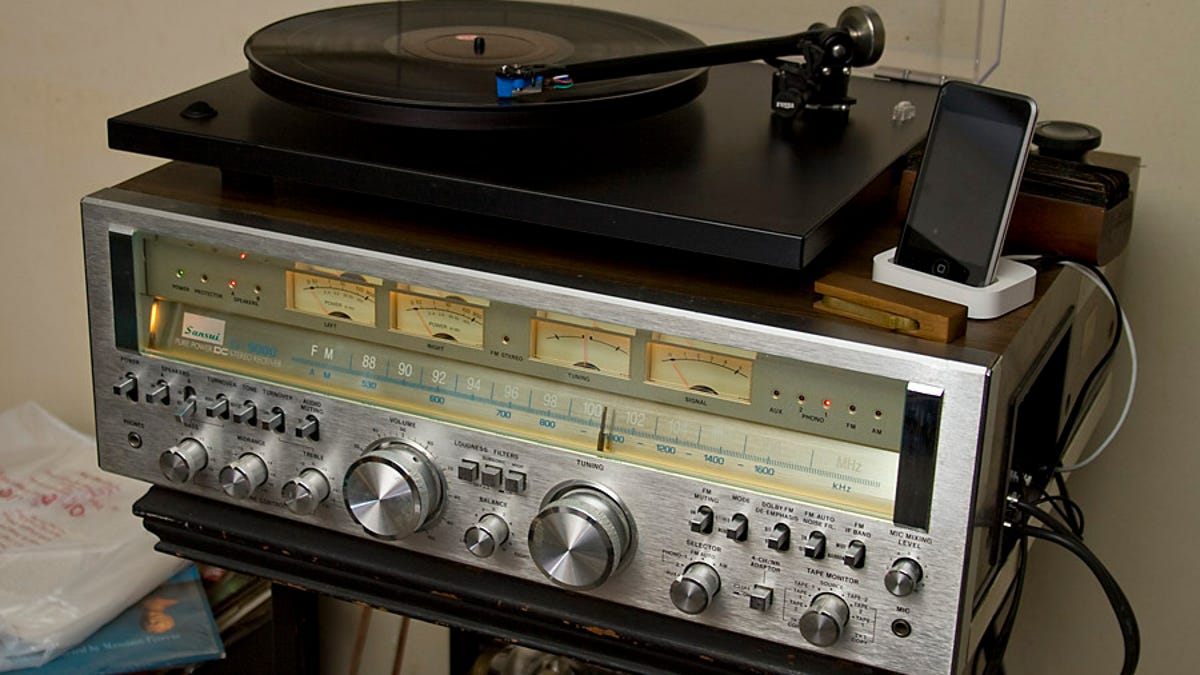Streaming-audio app Play-Fi takes on Sonos and AirPlay
Play-Fi is the newest home streaming standard and could give Sonos and AirPlay a run for their money, promising wider manufacturer support and hi-res playback.

How do you listen to your music at home? Is it through a radio, an iPhone connected to a hi-fi system, or even an old-school CD player? While music on the move is arguably standardized now -- many people use a smartphone and a pair of headphones -- there are myriad ways to listen to music at home.
For many people, the holy grail is a whole-home wireless audio system, but the current options, like Sonos and AirPlay, tend to be expensive, proprietary, and lacking some high-end audio features that enthusiasts are looking for. That's the niche the DTS-backed Play-Fi standard is trying to fill.
What is Play-Fi?
Play-Fi is a multidevice standard that makes it possible for users to control playback on a variety of different speakers in the home. The Play-Fi system is a combination of a controller (PC, iOS, Android), server (DLNA/web services) and hardware (speaker/receivers).
Play-Fi was designed by Phorus' Dannie Lau, an engineer who worked on one of the first Apple AirPlay speakers for Harman (JBL). He told CNET that after working with Harman he formed Phorus to design a multiroom system that could work like a Sonos setup, but without the price or bandwidth limitations.
Though it has the potential to function as a Bluetooth speaker, Play-Fi goes one better by connecting via your Wi-Fi network, and is capable of streaming in a much higher quality as a result.
Phorus released the first official Play-Fi systems in 2012 but Phorus' parent company DTS has licensed the technology to other companies such as Wren. Lau says as a result CES 2014 should have a number of different Play-Fi devices on show.
Lau said the technology was built to be flexible and doesn't rely on a proprietary mesh network (Sonos) and isn't limited to what he said was the control of only one speaker (AirPlay when used with an iPhone). Play-Fi works by distributing music in a peer-to-peer type system so that all the players take a part of the load.
At present Play-Fi is limited in its streaming services to Pandora, but Lau told CNET that more streaming services will be added soon. In comparison Sonos supports dozens of services while Apple AirPlay and Bluetooth are potentially unlimited.
Play-Fi also handles DLNA servers like PCs with playback of most file types -- FLAC, WAV, ALAC, MP3. He says file support is limited to CD quality at the moment, but support for hi-res audio (24-bit) is in the works.
The Phorus players in particular show a lot of promise as they also are able to support Bluetooth and soon Apple AirPlay. Lau said the hardware specifications are there in the standard and manufacturers can support as many elements as they choose. The ability to switch between three different connectivity options (and a fourth if you include analog-out) means the Phorus devices are currently the most broadly compatible on the market.
The closest product on the market to the Phorus PS1 Speaker is the Sonos Play:3, while the Phorus PR1 Receiver is similar to the Sonos Connect. While the Phorus versions are half the price of the Sonos devices, they also lack some of the features and build quality.
While the Phorus PS1 Speaker and PR1 Receiver are analog only (no digital output) Lau says the systems "don't skimp on quality" and use a Wolfson DAC. He said that there were also products in the pipeline that would enable digital outputs for audiophiles who like to use their own outboard DACs.
Lau said the main advantage of Play-Fi was that it was manufacturer-agnostic. He said as long as the Play-Fi logo was there, customers could mix and match components by different manufacturers.
Lau gave CNET a hands-on preview of the Phorus system and it appeared easy to use with the "multiroom" selector being foremost in the app. One interesting feature was that users could play two different apps at once -- the other one being Angry Birds in our case -- and have music play back on the Phorus system while the game audio came out of the phone.
Conclusion
Several CNET editors were big fans of the Logitech Squeezebox and bemoan its premature death in 2012. With its passing there are now plenty of products competing to fill its place -- Qualcomm's AllPlay, Korus, and Voco. If Play-Fi lives up to what Lau foretells -- particularly in regard to hi-res support and apps like Spotify -- then the Play-Fi system may be a worthy replacement. Look out for Play-Fi reviews on CNET.com in the very near future.

